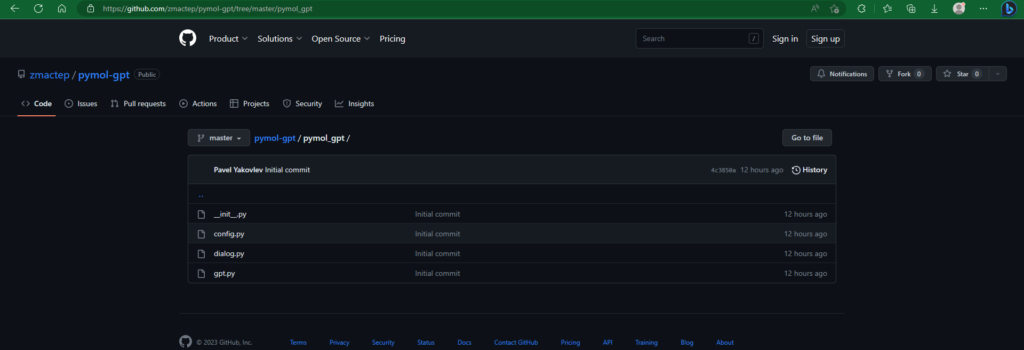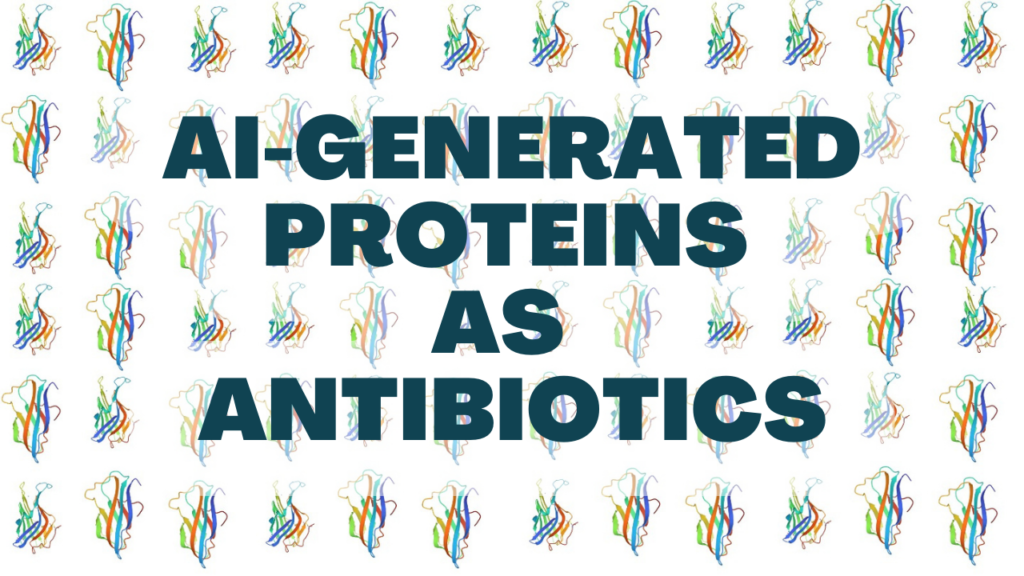- By - Gaurav Masand
- Posted on
- Posted in AI, ChatGPT, PyMol, Research
- 4 Comments
ChatGPT’s Real Plugin for PyMOL
Introduction
- PyMOL is a powerful open-source software package used for molecular visualization and analysis. It was created by Warren Lyford DeLano and released in 2000, and since then it has become a popular tool for structural biologists, computational chemists, and other researchers working in the field of molecular biology.
- PyMOL is capable of rendering 3D molecular structures with high-quality graphics and provides a range of tools for analyzing and manipulating these structures. It can display a wide range of molecular structures, including proteins, nucleic acids, carbohydrates, and small molecules, and it can visualize molecular interactions and dynamics.
- One of the key strengths of PyMOL is its flexibility and customizability. Users can create custom scripts and plugins to extend its functionality and tailor it to their specific needs. This has led to the development of a large community of users who have created a variety of plugins, scripts, and tutorials that are freely available online.
- PyMOL also supports a wide range of file formats, including PDB, CIF, and XYZ, and it can be integrated with other software packages such as GROMACS and AMBER for molecular dynamics simulations. This makes it a valuable tool for both visualization and simulation of molecular systems.
- Another strength of PyMOL is its ease of use. Its graphical user interface is intuitive and user-friendly, and it provides a wide range of tools for exploring and manipulating molecular structures. Its command-line interface also allows for more advanced users to access and manipulate its features.
- PyMOL has been used in a wide range of applications, including drug discovery, protein engineering, and basic research in structural biology. It has been cited in over 10,000 scientific publications and has become a standard tool for many researchers in the field.
Pymol with ChatGPT:
- PyMOL and chatGPT integration can be achieved using various programming languages and libraries. One such approach is to use the PyMOL API (Application Programming Interface) and the OpenAI API to create a chatbot that can interact with PyMOL.
- The PyMOL API allows for the integration of PyMOL with other programming languages such as Python, C++, and Java. It provides a range of functions for loading and manipulating molecular structures, rendering graphics, and performing analyses. The OpenAI API provides access to natural language processing tools that can be used to interpret user inputs and generate responses.
- To create a chatbot that can interact with PyMOL, one could start by defining a set of commands that the chatbot can understand and execute. For example, the chatbot could be programmed to load a specific molecular structure, display it in a certain orientation, perform a certain analysis, or export an image.
- When a user inputs a command, the chatbot could use natural language processing tools to interpret the command and extract the relevant information. It could then use the PyMOL API to execute the command and generate a response. The response could be in the form of text or an image, depending on the nature of the command.
- For example, a user might input the command “Load PDB file 1abc.pdb and display it in cartoon mode”. The chatbot could interpret this command and use the PyMOL API to load the specified PDB file and display it in cartoon mode. It could then generate an image of the structure and display it to the user.
- In summary, the integration of PyMOL and chatGPT can be achieved using a combination of the PyMOL API and the OpenAI API. This integration can enable the creation of a chatbot that can interpret user inputs, execute PyMOL commands, and generate responses in real-time. Such a tool could be useful for researchers and students who are new to PyMOL and need guidance on how to perform specific tasks.
Features:
- Simple integration with PyMOL, allowing for easy automation of tasks.
- Convenient command-line interface, allowing for natural language input of commands.
- Persistent API key storage, ensuring you only need to set the API key once for future use.
- Utilizes OpenAI’s GPT-4 or 3.5-turbo model for powerful, context-aware suggestions and guidance, leading to efficient and effective task automation.
Requirements:
- PyMOL
- OpenAI Python package: pip install openai



Install:
Install openai package into conda environment of PyMOL, and then download the plugin from
https://github.com/zmactep/pymol-gpt
add the plugin via Plugin Manager, as usual.
Limitations:
It’s important to keep in mind that the ChatGPT plugin has some limitations that users should be aware of. Here are some important points to consider:
- Dependency on OpenAI API: To use the ChatGPT plugin, an internet connection and an API key are required. This means that users who don’t have an internet connection or an API key won’t be able to use the plugin. Additionally, users who have slow or unstable internet connections may experience issues when using ChatGPT.
- Limited to knowledge up to September 2021: The ChatGPT model’s knowledge and capabilities are based on the training data available up to September 2021. As a result, the model may not have information on the latest techniques or features added to PyMol after that date. Users who rely heavily on the latest developments in PyMol may find the ChatGPT plugin less useful.
- Language limitations: The ChatGPT model was trained on text in English, so users who prefer to use PyMol in languages other than English may not be able to use the plugin effectively. Additionally, the model may not be able to understand technical jargon or specific domain knowledge outside of its training data.
Despite these limitations, the ChatGPT plugin is still a powerful tool that can greatly simplify PyMol tasks for users. With its natural language processing capabilities, it can quickly generate complex PyMol commands and help users navigate the software more efficiently. However, users should be aware of these limitations and use the plugin accordingly.
Future Developments:
The Open AI team is dedicated to improving the ChatGPT plugin by implementing several upgrades, including:
- Adding more commands: The team is working on incorporating additional PyMol commands into ChatGPT, expanding its functionality and making it more versatile.
- Improving usability: The team aims to make the plugin even more user-friendly, ensuring that users can quickly and easily navigate its features without encountering any technical difficulties.
- Enhancing efficiency: The team is exploring ways to improve the plugin’s performance and make it even faster and more efficient at executing commands.
With these improvements, ChatGPT has the potential to become an even more powerful and valuable tool for PyMol users.
Conclusion:
In conclusion, ChatGPT is an innovative and cutting-edge tool that has the potential to revolutionize the way we interact with PyMol. By utilizing natural language processing, ChatGPT can automate common PyMol tasks, saving users valuable time and effort when working with large or complex molecules. Its ability to execute multiple commands at once makes it a versatile and powerful tool for researchers, students, and professionals alike.
As ChatGPT continues to evolve and undergo further development, we can expect to see even more improvements in its functionality, usability, and efficiency. With these advancements, ChatGPT has the potential to further streamline workflows and enhance productivity for PyMol users.
So why not give ChatGPT a try and experience the benefits for yourself? By using this powerful tool, you can simplify your PyMol work and achieve more in less time. We look forward to seeing the future developments of this technology and its continued contribution to PyMol automation.












online
Thank you for any other fantastic article. Where else could anybody get that kind of info in such an ideal way of writing?
I have a presentation next week, and I am on the look for such
information.
Technology
Have you ever thought about writing an e-book or guest authoring on other sites?
I have a blog based upon on the same subjects you discuss and would really like to have you share some stories/information. I know
my readers would value your work. If you’re even remotely interested, feel free
to shoot me an e mail.
travel for work fair work
Wow, incredible blog layout! How long have you been blogging for?
you made blogging look easy. The overall look of your web site is
magnificent, let alone the content!
Vytvorenie úctu na binance
Thanks for sharing. I read many of your blog posts, cool, your blog is very good.